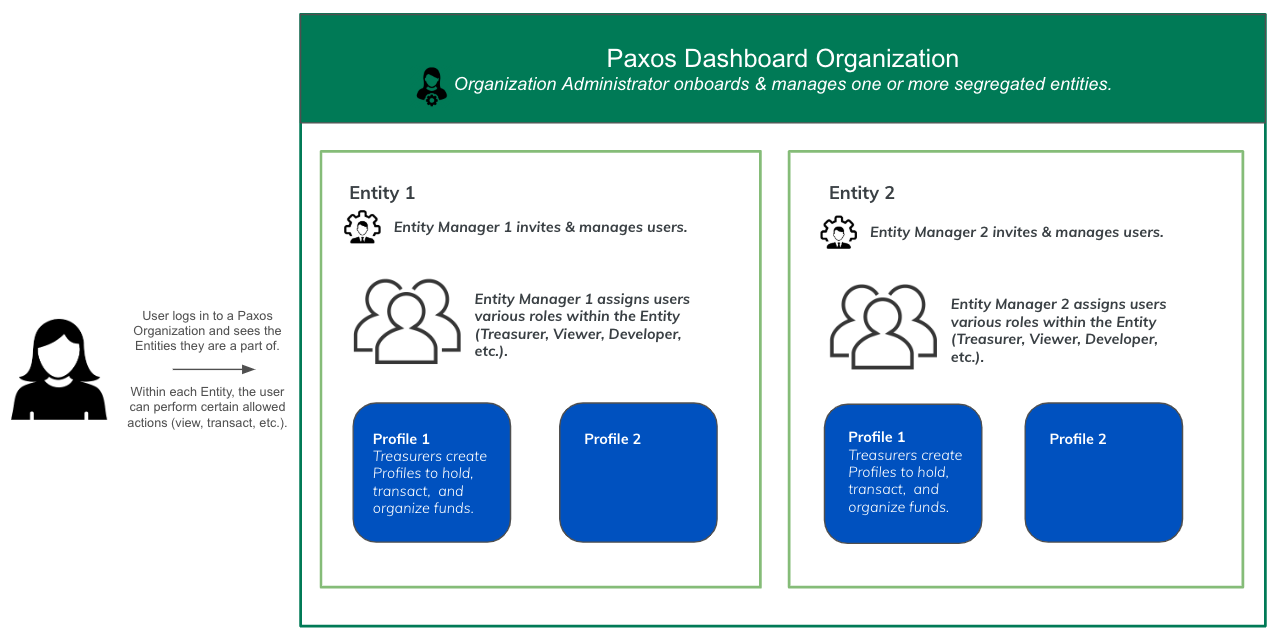
Organization
When you sign up for the Paxos Dashboard, you are creating Organization Administrator credentials to log into a Dashboard Organization. As the top of the hierarchy the Organization typically maps to the parent of a legal entity or business group, comprising one or more entities. For example, if My Company is comprised of three separate legal entities, My Company Asia, My Company Europe and My Company North America, using My Company as the organization will enable you to onboard the entities, using the legal business names, within the same organization bucket.Entity
Entities, typically mapped to teams, business groups, holding companies, or separate legal entities, are onboarded within the Organization.- Funds are segregated at the Entity level.
- Users belonging to a particular Entity can see balances, transfers, and other information on in the Entity they belong to.
- Roles & Permissions, APIs keys are scoped at an Entity level. For example, if an Organization has 3 entities, User A has a Treasurer role in Entity 1, a Viewer role in Entity 2, and no access to Entity 3. See Roles and Responsibilities.
- Organization Administrators who complete the onboarding for an Entity automatically become the Entity Manager for that new Entity. Entity Managers are allowed to assign roles, add users, map identity provider groups to roles, etc. Entity Managers can be reassigned later